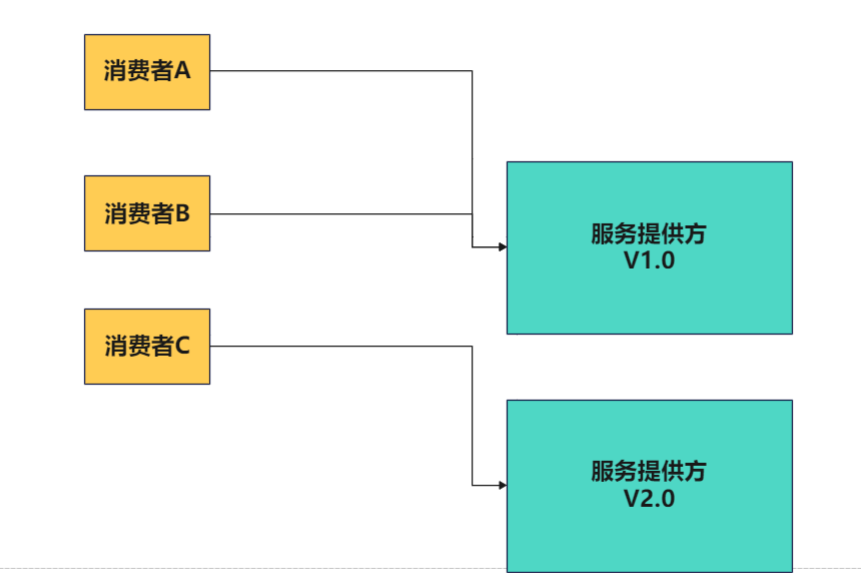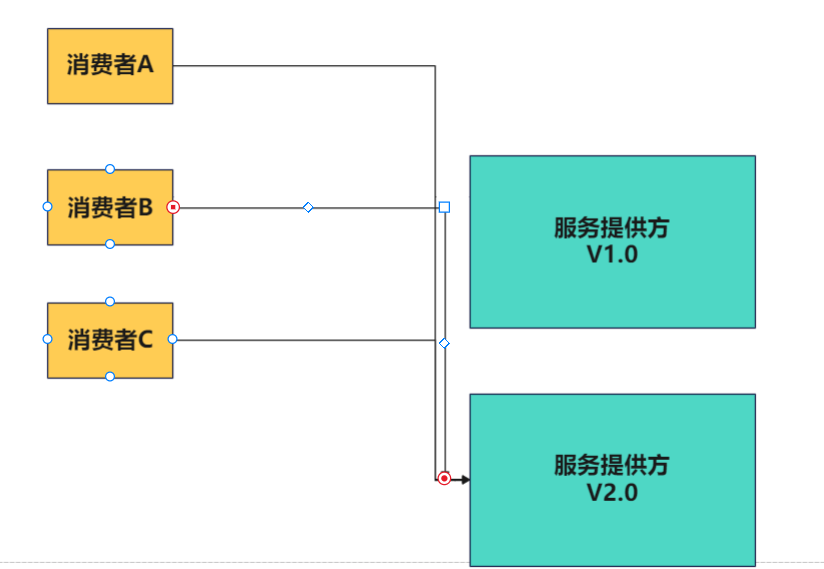【分布式与微服务】dubbo分布式服务框架(高级特性篇)
1.序列化
序列化是将Java对象转化为流的数据,流的数据才能在两台主机上进行传输
dubbo内部已经对序列化和反序列化封装了,我们只需要让实体类实现Serializable接口即可
1.新建一个模块为dubbo-pojo,创建一个User类(先不实现Serializable接口)
2.在dubbo-interface中关联dubbo-pojo,因为我们在接口模块写一个测试user的接口
在UserService接口中新增一个方法
3.在dubbo-service模块中实现此方法,并简单返回一个测试的user对象
4.在dubbo-web模块下的UserController中新增find方法
然后进行tomcat7:run进行测试
然后测试就发现报错了
控制台报错信息
需要实现Serializable接口
重新启动
成功访问!
2.地址缓存
面试题:注册中心挂了,服务是否可以正常访问?
可以,因为dubbo服务消费者在第一次调用时,会将服务提供方地址缓存到本地,以后在调用就不会访问注册中心。
当服务提供者地址发生变化时,注册中心会通知服务消费者
停掉zookeeper服务注册中心
访问成功!
3.超时
问题描述:
服务消费者在调用服务提供者的时候发生了阻塞、等待的情形,这个时候,服务消费者会一
直等待下去。在某个峰值时刻,大量的请求都在同时请求服务消费者,会造成线程的大量堆
积,势必会造成雪崩。
dubbo利用超时机制来解决这个问题,设置一个超时时间,在这个时间段内,无法完成服务
访问,则自动断开连接。
使用timeout属性配置超时时间,默认值1000,单位毫秒。
1.在dubbo-service模块中配置超时时间,并模拟超时
2.访问失败,超时
注意点:
在服务消费方@Reference也可以配置超时时间,并且会覆盖服务提供方的超时时间,也就是说@Reference配置1s,之前服务提供方配置3s,最后结果是1s之后就发生超时
建议在服务提供方配置超时时间,毕竟这个服务是服务提供方编写的,在编写时就应该考虑超时时间的配置问题
4.重试
设置了超时时间,在这个时间段内,无法完成服务访问,则自动断开连接。如果出现网络抖动(网
络突然断掉又重新连接上,网络不稳定),则这一次请求就会失败。
Dubbo提供重试机制来避免类似问题的发生。通过retries属性来设置重试次数,默认为2次。(总
共发了三次)
进行了超时重试
5.多版本
灰度发布: 当出现新功能时,会让一部分用户先使用新功能,用户反馈没问题时,再将所有用户迁
移到新功能。
V2.0版本没问题之后再将所有用户迁移到V2.0
dubbo中使用version属性来设置和调用同一个接口的不同版本
1.复制UserServiceImpl类并改为v2.0版本
2.先指定访问v1.0版本,启动
控制台打印v1.0版本
3.指定访问v2.0版本,重启dubbo-web(不需要重启dubbo-service了)
6.负载均衡
负载均衡策略:
1. Random :按权重随机,默认值。按权重设置随机概率。
2. RoundRobin:按权重轮询。
3. LeastActive:最少活跃调用数,相同活跃数的随机。
4. ConsistentHash: 一致性Hash,相同参数的请求总是发到同一提供者。
以默认的Random为例
1.启动 weight = 100 tomcat端口9000 dubbo端口20880 qos端口22222
2. 启动weight = 200 tomcat端口9001 dubbo端口20882 qos端口44444 再启动一次tomcat7:run
(注意不是重启上一个而是再启动一个)
3. 启动weight = 100 tomcat端口9002 dubbo端口20883 qos端口55555 再启动一次tomcat7:run
配置负载均衡的策略random
启动dubbo-web模块的tomcat7:run
(我们一个启动了四个tomcat)
访问出现2 说明是第二个服务提供方
不断刷新出现3 说明是第三个服务提供方
不断刷新出现1 说明是第一个服务提供方
7.集群容错
集群容错策略:
1. Failover Cluster:失败重试。(默认值)当出现失败,重试其它服务器,默认重试2次,使用
retries配置。一般用于读操作
2. Failfast Cluster : 快速失败,只发起一次调用,失败立即报错。通常用于写操作。
3. Failsafe Cluster : 失败安全,出现异常时,直接忽略。返回一个空结果。
4. FailbackCluster : 失败自动恢复,后台记录失败请求,定时重发。
5. Forking Cluster : 并行调用多个服务器,只要一个成功即返回。Broadcast Cluster :广播调用
所 有提供者,逐个调用,任意一台报错则报错。
以Failover Cluster策略为例
1.启动 tomcat端口9000 dubbo端口20880 qos端口22222
2. tomcat端口9001 dubbo端口20881 qos端口44444 再启动一次tomcat7:run
3. tomcat端口9002 dubbo端口20882 qos端口55555 再启动一次tomcat7:run
访问成功!
但是dubbo-web模块的tomcat日志信息出现超时错误,
三个服务提供方的日志信息
发现三个都访问了,但是1和2都会超时(我们通过进程睡眠模拟了超时),消费方会访问1超时,
然后根据Failover Cluster集群容错策略,重试访问2也超时了,再重试一次访问3成功!
8.服务降级
mock=force:return null 表示消费方对该服务的方法调用都直接返回null值,不发起远程调用。用
来屏蔽不重要服务不可用时对调用方的影响。
1.配置服务提供方
2.配置服务消费方
3.分别启动服务提供方和服务消费方
成为了空白页面,服务被屏蔽了
mock=fail:return null 表示消费方对该服务的方法调用在失败后,再返回null值,不抛异常。用来
容忍不重要服务不稳定时对调用方的影响。
修改服务消费方的配置其余不变重新启动
(服务提供方我们模拟了超时)失败后重试了三次,但是页面看不到任何信息
- 点赞
- 收藏
- 关注作者























评论(0)